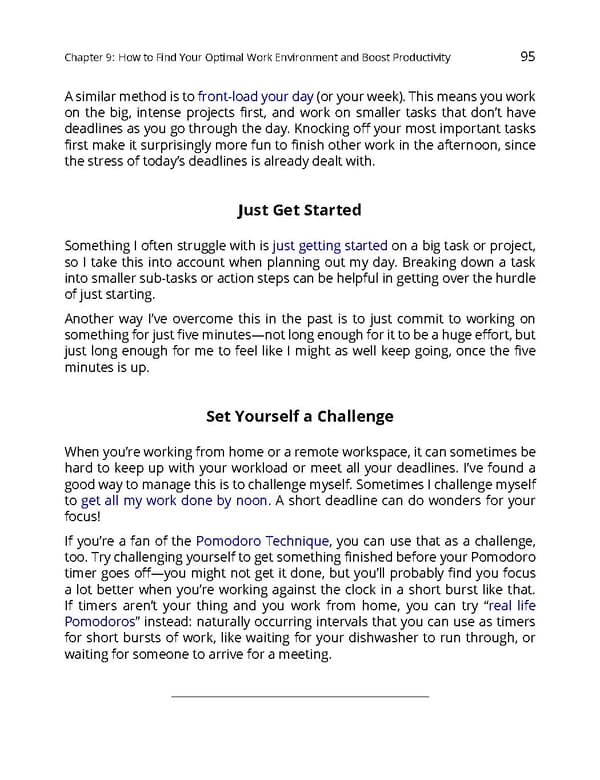Chapter9: HowtoFindYourOptimalWorkEnvironmentandBoostProductivity 95 Asimilarmethodistofront-loadyourday(oryourweek).Thismeansyouwork on the big, intense projects first, and work on smaller tasks that don’t have deadlines as you go through the day. Knocking off your most important tasks first make it surprisingly more fun to finish other work in the afternoon, since the stress of today’s deadlines is already dealt with. Just Get Started Something I often struggle with is just getting started on a big task or project, so I take this into account when planning out my day. Breaking down a task into smaller sub-tasks or action steps can be helpful in getting over the hurdle of just starting. Another way I’ve overcome this in the past is to just commit to working on somethingforjustfiveminutes—notlongenoughforittobeahugeeffort,but just long enough for me to feel like I might as well keep going, once the five minutesisup. SetYourselfaChallenge Whenyou’reworkingfromhomeoraremoteworkspace,itcansometimesbe hard to keep up with your workload or meet all your deadlines. I’ve found a goodwaytomanagethisistochallengemyself.SometimesIchallengemyself to get all my work done by noon. A short deadline can do wonders for your focus! If you’re a fan of the Pomodoro Technique, you can use that as a challenge, too. Try challenging yourself to get something finished before your Pomodoro timer goes off—you might not get it done, but you’ll probably find you focus a lot better when you’re working against the clock in a short burst like that. If timers aren’t your thing and you work from home, you can try “real life Pomodoros” instead: naturally occurring intervals that you can use as timers for short bursts of work, like waiting for your dishwasher to run through, or waiting for someone to arrive for a meeting.
 The Ultimate Guide to Remote Work Page 98 Page 100
The Ultimate Guide to Remote Work Page 98 Page 100